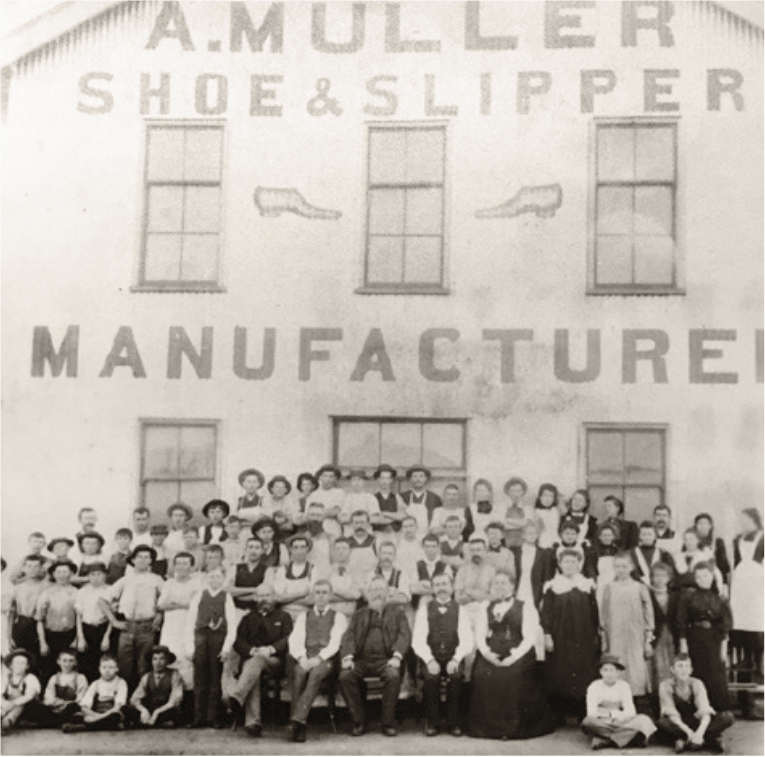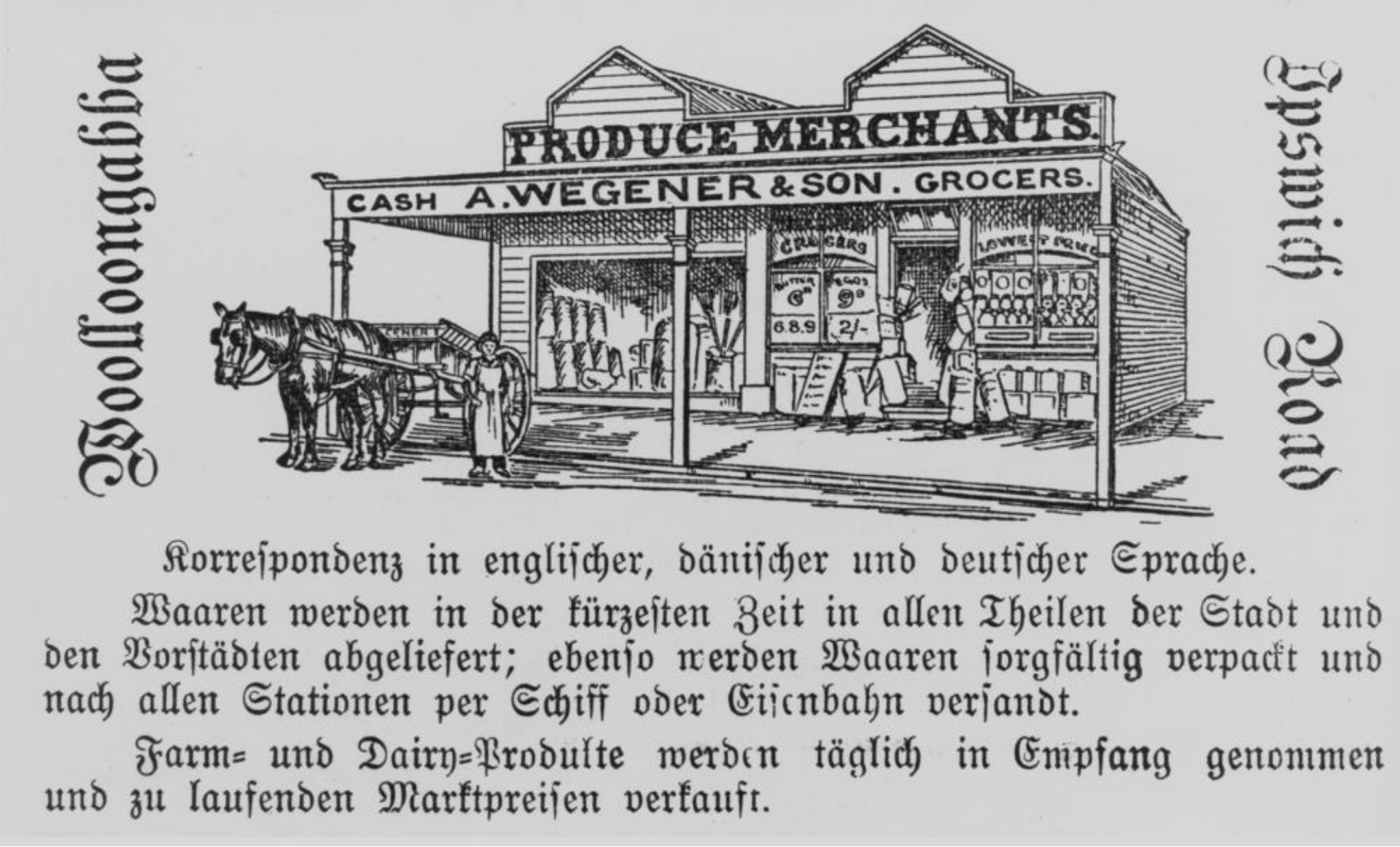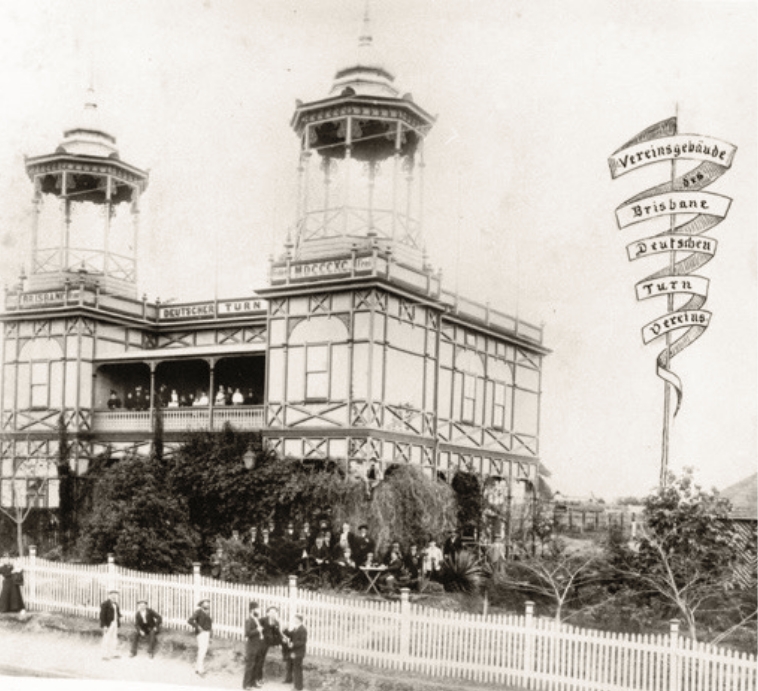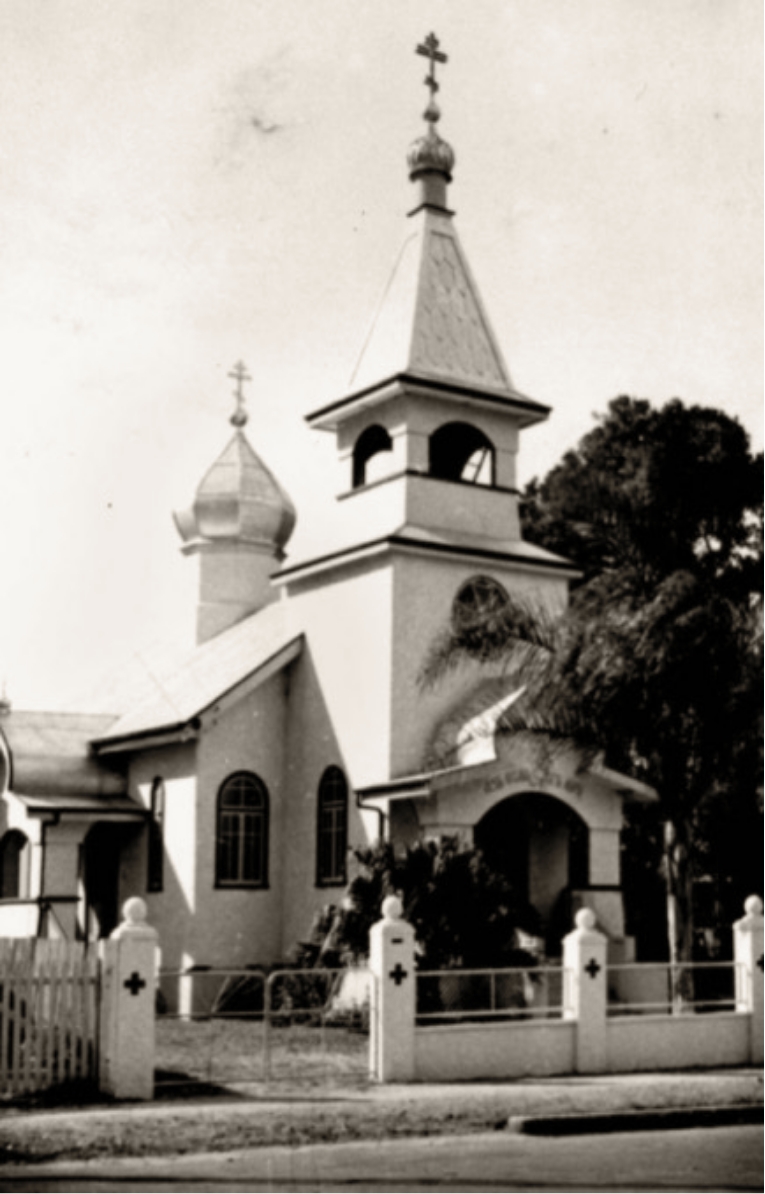A cosmopolitan local community

A. Müller’s Shoe and Slipper workshop, Balaclava Street Woolloongabba, c.1896. State Library of Queensland.
Local employment was centred on small workshops, stories and industrial occupations. The Queensland Post Office Directories for the 1870s list typical occupations and business types, such as bootmakers, bakers, grocers, hoteliers, bricklayers, carpenters, blacksmiths and saddlers. Larger employers included timberyards (Lahey’s mill, close to the railway yards, was the most prominent), meatworks and brick-makers.
Many new arrivals in Brisbane settled in Woolloongabba and South Brisbane, where work was available and housing relatively close and inexpensive. Many were Russian and German emigrants, and Woolloongabba became known as a residential enclave for those two nationalities in particular.
In Hawthorne Street, a German Lutheran Church was built around 1895, replacing the earlier German-speaking church in South Brisbane and reflecting the number of German families living in the area.
Many Germans set up businesses in the area, including shop frontages along the main roads and nearby workshops. Müller’s shoe and slipper workshop in Balaclava Street, for example, employed a large number of cobblers, leatherworkers and related artisans, many of whom would have lived in the area and walked to work. Another prominent German business was Wegeners, a grocery and supplies store on Ipswich Road at the corner of Hawthorne Street.

An advertisement of 1898 road advertised their wares to Brisbane’s German-speaking community, with home deliveries on offer.
Meanwhile, a social club for the German community of Brisbane was built in Vulture Street in 1890. Known as the Deutscher Turnverein, this was a prominent cultural and social centre, with concerts, sporting events, performances and social gatherings. Quite an imposing building, this was for decades a major local landmark and was replaced on the same site in 1933-34 by today’s German Club premises.

Three German buildings in Brisbane, c. 1909: National Library of Australia.

The Deutscher Turnverein, Vulture Street, Woolloongabba c. 1898 State Library of Queensland
Russian immigrants were also arriving in large numbers, especially after the political turmoil in Russia in 1905 and 1917. Many emigrants were political and religious dissidents, refugees fleeing Tsarist and later Bolshevik repression. After riding the Trans-Siberian railway, many arrived at Harbin, a largely Russian city on the Chinese frontier, and from there sailed for Australia where Brisbane was often the first port of call.

St Nicholas Russian Orthodox Cathedral, c. 1936 State Library of Queensland
By 1919 around 1000 Russian-born men and women lived in and around Woolloongabba and South Brisbane. Many worked as labourers or travelled into the bush in search of itinerant work. During 1918-19, many were targeted during the ‘Red Flag Riots’, when anti-Russian and anti-socialist prejudices flared into violence on the streets of South Brisbane. As a visibly different and ‘alien’ population, Orthodox religious services were initially held in a cottage on Grey Street supplied by the Anglican Church in 1925, and the following year Australia’s first dedicated Russian Orthodox church was built on Vulture Street.
This new church was dedicated to St Nicholas, Bishop of Myra, patron saint of travellers. Originally a small wooden building, it was extended and enlarged in the mid-1930s to become the Russian Orthodox Cathedral of St Nicholas. It was followed in 1952 by a second Russian Orthodox Church in the area, St Seraphim, on Hawthorne Street.

